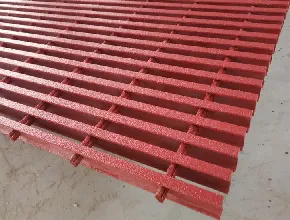loading...
- No. 9, Xingyuan South Street, Dongwaihuan Road, Zaoqiang County, Hengshui, Hebei, China
- admin@zjcomposites.com
- +86 15097380338
- Welcome to visit our website!
frp grating price
Understanding the Pricing of FRP Grating
Fiber Reinforced Plastic (FRP) grating has gained significant popularity across various industries due to its outstanding properties such as corrosion resistance, lightweight structure, and durability. As more and more companies opt for FRP grating in their applications, understanding its pricing becomes essential for effective budgeting and decision-making.
The price of FRP grating can vary widely based on several factors. One prominent factor is the type of resin used in the manufacturing process. Common resins include polyester, vinyl ester, and epoxy, each offering different performance characteristics and, consequently, different price points. Polyester grating is typically the most economical option when considering upfront costs, while epoxy offers superior durability and chemical resistance, leading to a higher price tag.
Understanding the Pricing of FRP Grating
Customization also plays a significant role in pricing. Standard sizes and shapes of FRP grating may come at a lower cost due to mass production, while custom dimensions or unique colors can lead to increased prices. It’s crucial for end-users to consider their specific project needs, as the upfront cost savings of standard products may be offset by the additional expense of custom solutions.
frp grating price

The thickness and load-bearing capacity of FRP grating offer additional considerations regarding price. Thicker gratings designed for higher loads might be more expensive but are necessary for applications in heavy industrial settings. It is important for procurers to analyze the load requirements and select products that offer the optimal balance between cost and performance.
Furthermore, geographic location can affect pricing due to transportation costs and available suppliers. In regions closer to manufacturers, shipping costs might be lower, making the FRP grating more affordable. Conversely, remote locations may incur higher logistics expenses, which can be reflected in the final pricing.
Market demand and trends also influence the cost of FRP grating. For example, during periods of high construction activity, the demand for materials like FRP grating tends to increase, leading to potential price hikes. Conversely, changes in the economy can also affect production costs, including labor and raw materials, ultimately impacting end-user pricing.
In summary, the price of FRP grating is influenced by a myriad of factors, including resin type, manufacturing process, customization, thickness, geographic location, and market demand. For buyers, it is essential to consider these variables and work closely with suppliers to understand their options thoroughly. By doing so, companies can make informed purchasing decisions that meet their specific needs while remaining within budget constraints. Understanding these elements is critical for successful applications across various industries, from construction to marine and beyond.
-
The Rise of FRP Profiles: Strong, Lightweight, and Built to LastNewsJul.14,2025
-
SMC Panel Tanks: A Modern Water Storage Solution for All EnvironmentsNewsJul.14,2025
-
GRP Grating: A Modern Solution for Safe and Durable Access SystemsNewsJul.14,2025
-
Galvanized Steel Water Tanks: Durable, Reliable, and Ready for UseNewsJul.14,2025
-
FRP Mini Mesh Grating: The Safer, Smarter Flooring SolutionNewsJul.14,2025
-
Exploring FRP Vessels: Durable Solutions for Modern Fluid HandlingNewsJul.14,2025
-
GRP Structures: The Future of Lightweight, High-Performance EngineeringNewsJun.20,2025
